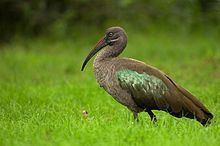Kingdom Animalia Order Pelecaniformes Genus Bostrychia Higher classification Bostrychia | Phylum Chordata Family Threskiornithidae Scientific name Bostrychia hagedash Rank Species | |
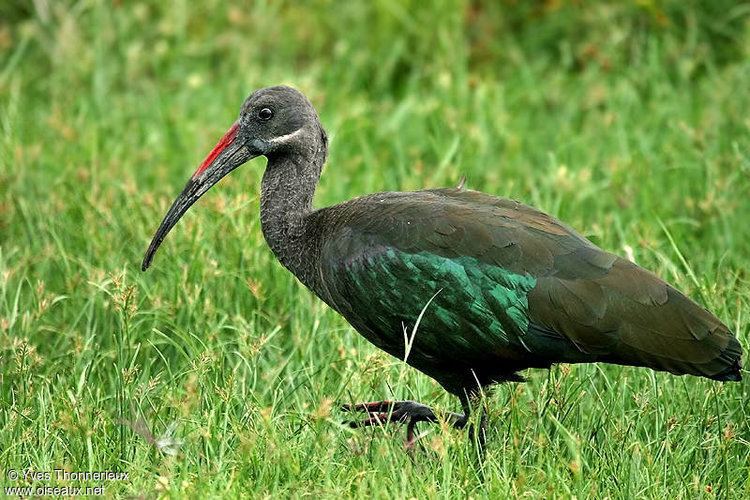 | ||
Similar Bird, Bostrychia, African spoonbill, Black‑headed heron, African sacred ibis | ||
Hadada ibis nairobi
The hadada or hadeda ibis (Bostrychia hagedash), is an ibis found in Sub-Saharan Africa.
Contents
- Hadada ibis nairobi
- Animal sound no 11 hadada ibis
- Appearance
- Call
- Habitat and distribution
- Diet
- Conservation status
- References
Animal sound no 11 hadada ibis
Appearance
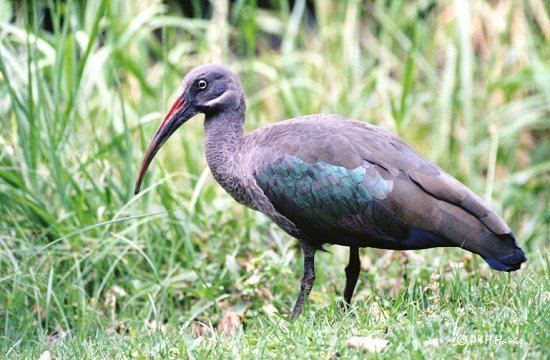
The hadeda is a large (about 76 cm long), grey-to-partly brown species of ibis. It has a narrow, white, roughly horizontal stripe across its cheeks. This is sometimes called the "moustache" though it does not reach the mouth corners. The plumage over the wings has an iridescent purple sheen. The bird has blackish legs and a large grey-to-black bill with a red stripe on the upper mandible. The upper surfaces of the toes are of a similar red. The wings are powerful and broad, enabling quick take-offs and easy manoeuvring through dense tree cover.
Call
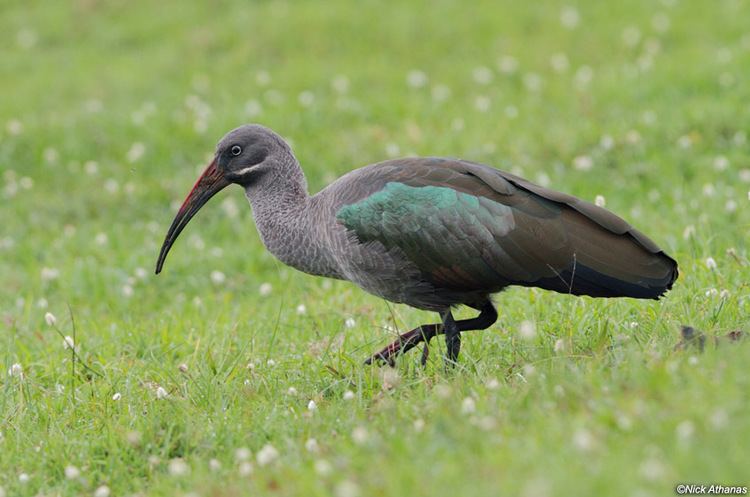
It has an extremely loud and distinctive "haa-haa-haa-de-dah" call—hence the name. The call is often heard when the birds are flying or are startled, or when the birds communicate socially, for example early in the morning in residential suburbs. While roosting they produce a single loud "haaaa". When foraging, their contact call is a low growl similar to that made by a young puppy.
Habitat and distribution

The hadeda ibis is found throughout Sub-Saharan Africa in open grasslands, savanna and wetlands, as well as urban parks, school fields, green corridors and large gardens. This bird occurs in Sudan, Burundi, Ethiopia, Senegal, Uganda, Tanzania, Gabon, Democratic Republic of Congo, Cameroon, Gambia, Kenya, Somalia, Botswana, Mozambique, Zimbabwe and South Africa.
Diet

It feeds mainly on earthworms, using its long scimitar-like bill to probe soft soil. It also eats larger insects, such as the Parktown prawn, as well as spiders and small lizards. These birds also favour snails and will feed in garden beds around residential homes. They are particularly welcomed on bowling and golf greens because they are assiduous in extracting larvae of moths and beetles that feed on the roots of the grass. It is not clear how they detect these, but it seems likely that they can hear their chewing and digging.
Conservation status
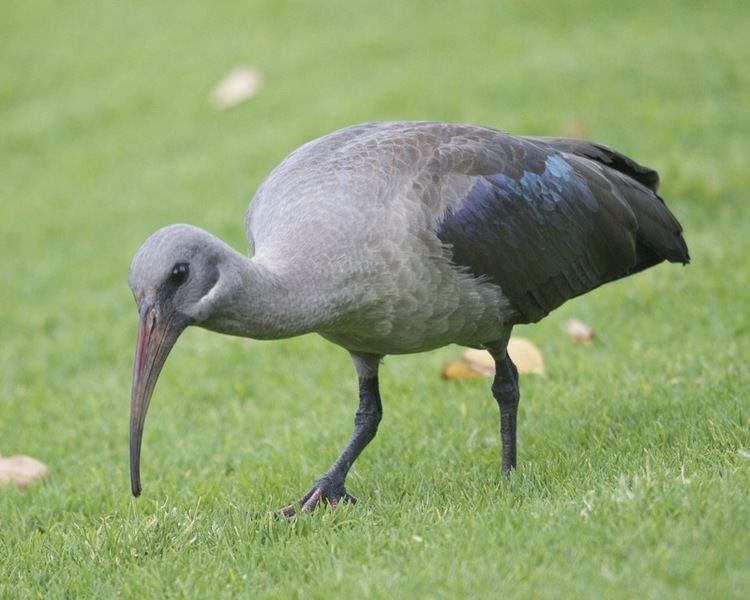
Widespread and common throughout its large range, the hadeda ibis is evaluated as Least Concern on the IUCN Red List of Threatened Species.

